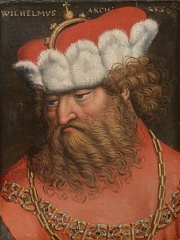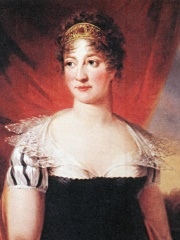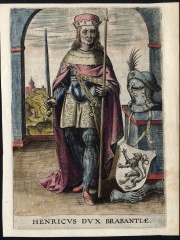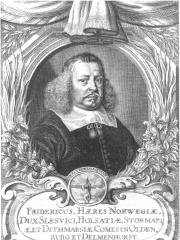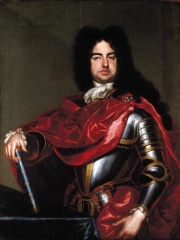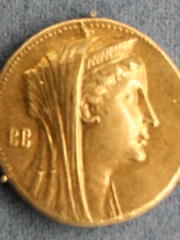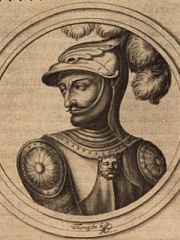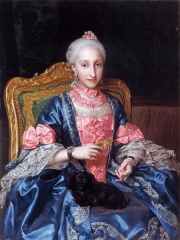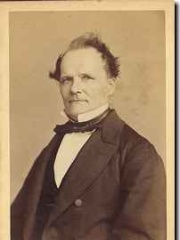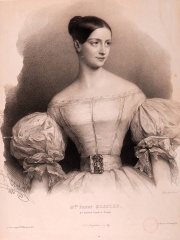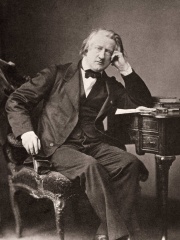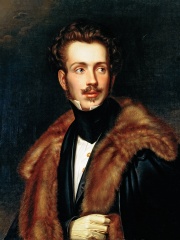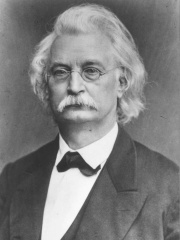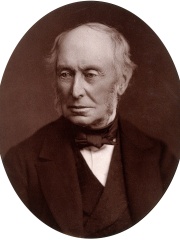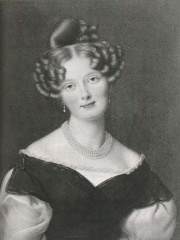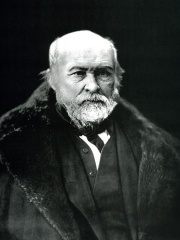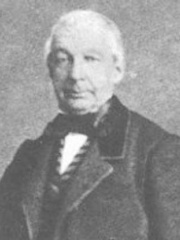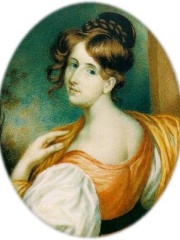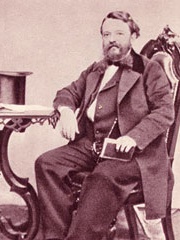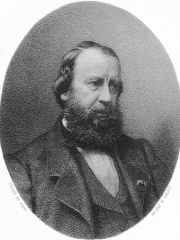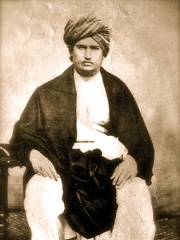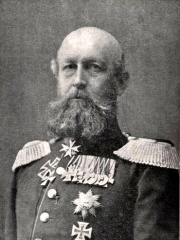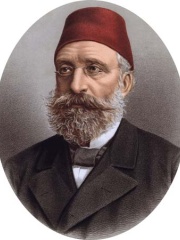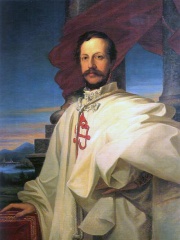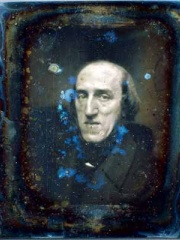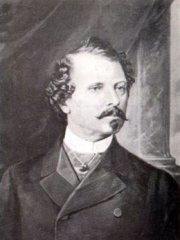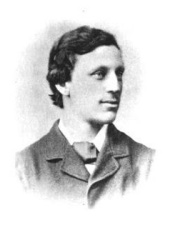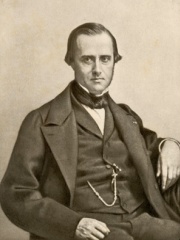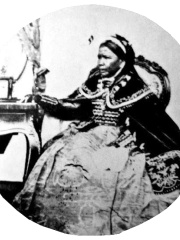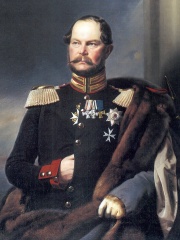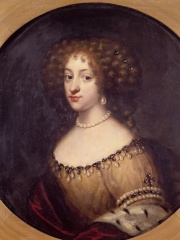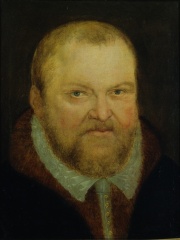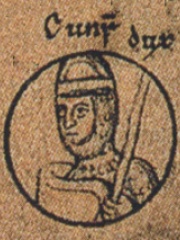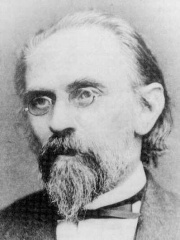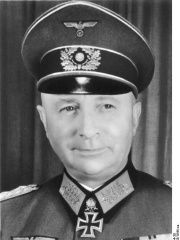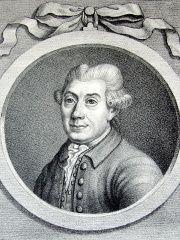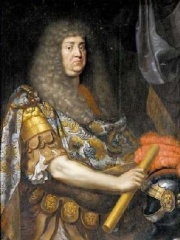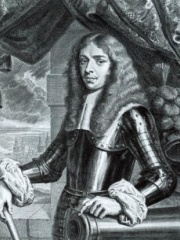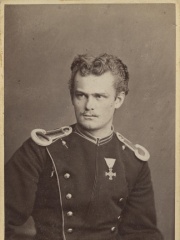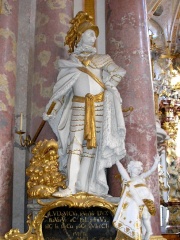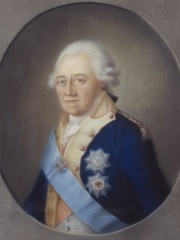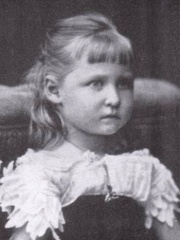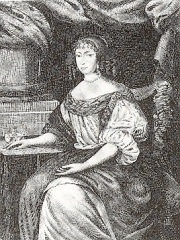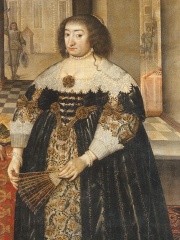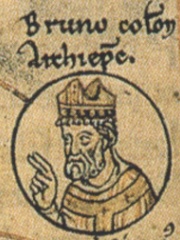NOBLEMAN
Princess Marianne of the Netherlands
1810 - 1883
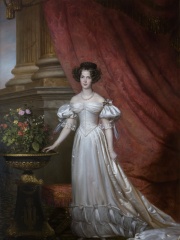
 Princess Marianne of the Netherlands
Princess Marianne of the Netherlands
Princess Marianne of the Netherlands, Princess of Orange-Nassau (Wilhelmina Frederika Louise Charlotte Marianne; 9 May 1810 – 29 May 1883) was the youngest child of King William I of the Netherlands and Princess Wilhelmine of Prussia. Princess Marianne was a woman who thought and lived very unconventionally for her time because she had left her unfaithful husband Prince Albert of Prussia and had an illegitimate son (whom she openly recognized) with her partner Johannes van Rossum, with whom she also lived in a common-law marriage. She was banished from the Kingdom of Prussia. An avid art collector and patron, she made her new residence, Schloss Reinhartshausen in Erbach, a cultural attraction on the Rhine. Read more on Wikipedia
Her biography is available in 26 different languages on Wikipedia. Princess Marianne of the Netherlands is the 281st most popular nobleman (down from 214th in 2024), the 1,194th most popular biography from Germany (down from 982nd in 2019) and the 37th most popular German Nobleman.
Princess Marianne of the Netherlands is most famous for her marriage to Prince Johan Friso of Orange-Nassau.
Memorability Metrics
Page views of Princess Marianne of the Netherlands by language
Among NOBLEMEN
Among noblemen, Princess Marianne of the Netherlands ranks 281 out of 1,415. Before her are William, Duke of Austria, Hedvig Elisabeth Charlotte of Holstein-Gottorp, Henry I, Duke of Brabant, Frederick III, Duke of Holstein-Gottorp, Katherine Woodville, Duchess of Buckingham, and Antonio Farnese, Duke of Parma. After her are Princess Stéphanie of Monaco, Arsinoe I, Fumihito, Prince Akishino, Queen Noor of Jordan, Thomas, Count of Savoy, and Infanta Maria Josefa of Spain.
Most Popular Noblemen in Wikipedia
Go to all RankingsWilliam, Duke of Austria
1370 - 1406
HPI: 67.28
Rank: 275
Hedvig Elisabeth Charlotte of Holstein-Gottorp
1759 - 1818
HPI: 67.27
Rank: 276
Henry I, Duke of Brabant
1165 - 1235
HPI: 67.26
Rank: 277
Frederick III, Duke of Holstein-Gottorp
1597 - 1659
HPI: 67.25
Rank: 278
Katherine Woodville, Duchess of Buckingham
1458 - 1497
HPI: 67.22
Rank: 279
Antonio Farnese, Duke of Parma
1679 - 1731
HPI: 67.11
Rank: 280
Princess Marianne of the Netherlands
1810 - 1883
HPI: 67.11
Rank: 281
Princess Stéphanie of Monaco
1965 - Present
HPI: 67.10
Rank: 282
Arsinoe I
305 BC - 248 BC
HPI: 67.09
Rank: 283
Fumihito, Prince Akishino
1965 - Present
HPI: 67.08
Rank: 284
Queen Noor of Jordan
1951 - Present
HPI: 67.08
Rank: 285
Thomas, Count of Savoy
1178 - 1233
HPI: 67.04
Rank: 286
Infanta Maria Josefa of Spain
1744 - 1801
HPI: 67.04
Rank: 287
Contemporaries
Among people born in 1810, Princess Marianne of the Netherlands ranks 21. Before her are Ernst Kummer, Fanny Elssler, Henri Victor Regnault, Auguste, Duke of Leuchtenberg, Karl Richard Lepsius, and William Armstrong, 1st Baron Armstrong. After her are Princess Pauline of Württemberg, Nikolay Pirogov, Hermann Heinrich Gossen, Elizabeth Gaskell, Francesco Maria Piave, and Constant Troyon. Among people deceased in 1883, Princess Marianne of the Netherlands ranks 14. Before her are Dayananda Saraswati, Frederick Francis II, Grand Duke of Mecklenburg-Schwerin, Midhat Pasha, Charles II, Duke of Parma, Joseph Plateau, and Eva Gonzalès. After her are Thomas Mayne Reid, Pertevniyal Sultan, Arnold Toynbee, Édouard Roche, Ranavalona II, and Prince Charles of Prussia.
Others Born in 1810
Go to all RankingsErnst Kummer
MATHEMATICIAN
1810 - 1893
HPI: 68.68
Rank: 15
Fanny Elssler
POLITICIAN
1810 - 1884
HPI: 68.40
Rank: 16
Henri Victor Regnault
CHEMIST
1810 - 1878
HPI: 68.00
Rank: 17
Auguste, Duke of Leuchtenberg
POLITICIAN
1810 - 1835
HPI: 67.37
Rank: 18
Karl Richard Lepsius
ARCHAEOLOGIST
1810 - 1884
HPI: 67.36
Rank: 19
William Armstrong, 1st Baron Armstrong
ENGINEER
1810 - 1900
HPI: 67.28
Rank: 20
Princess Marianne of the Netherlands
NOBLEMAN
1810 - 1883
HPI: 67.11
Rank: 21
Princess Pauline of Württemberg
NOBLEMAN
1810 - 1856
HPI: 66.88
Rank: 22
Nikolay Pirogov
BIOLOGIST
1810 - 1881
HPI: 66.49
Rank: 23
Hermann Heinrich Gossen
ECONOMIST
1810 - 1858
HPI: 66.46
Rank: 24
Elizabeth Gaskell
WRITER
1810 - 1865
HPI: 66.46
Rank: 25
Francesco Maria Piave
WRITER
1810 - 1876
HPI: 65.57
Rank: 26
Constant Troyon
PAINTER
1810 - 1865
HPI: 64.93
Rank: 27
Others Deceased in 1883
Go to all RankingsDayananda Saraswati
RELIGIOUS FIGURE
1824 - 1883
HPI: 70.37
Rank: 8
Frederick Francis II, Grand Duke of Mecklenburg-Schwerin
POLITICIAN
1823 - 1883
HPI: 69.08
Rank: 9
Midhat Pasha
POLITICIAN
1822 - 1883
HPI: 68.50
Rank: 10
Charles II, Duke of Parma
POLITICIAN
1799 - 1883
HPI: 68.26
Rank: 11
Joseph Plateau
PHYSICIST
1801 - 1883
HPI: 68.19
Rank: 12
Eva Gonzalès
PAINTER
1849 - 1883
HPI: 67.20
Rank: 13
Princess Marianne of the Netherlands
NOBLEMAN
1810 - 1883
HPI: 67.11
Rank: 14
Thomas Mayne Reid
WRITER
1818 - 1883
HPI: 66.66
Rank: 15
Pertevniyal Sultan
POLITICIAN
1812 - 1883
HPI: 65.62
Rank: 16
Arnold Toynbee
HISTORIAN
1852 - 1883
HPI: 65.45
Rank: 17
Édouard Roche
MATHEMATICIAN
1820 - 1883
HPI: 65.37
Rank: 18
Ranavalona II
POLITICIAN
1829 - 1883
HPI: 65.23
Rank: 19
Prince Charles of Prussia
POLITICIAN
1801 - 1883
HPI: 64.94
Rank: 20
In Germany
Among people born in Germany, Princess Marianne of the Netherlands ranks 1,194 out of 7,253. Before her are Albert III, Duke of Saxony (1443), Horst Tappert (1923), Princess Anna Sophie of Denmark (1647), Augustus, Elector of Saxony (1526), Conrad II of Italy (1074), and Emil Erlenmeyer (1825). After her are Severinus of Noricum (410), Godfrey Kneller (1646), Josef Harpe (1887), Carsten Niebuhr (1733), Manuel Neuer (1986), and Engelbert Kaempfer (1651).
Others born in Germany
Go to all RankingsAlbert III, Duke of Saxony
POLITICIAN
1443 - 1500
HPI: 67.14
Rank: 1,188
Horst Tappert
ACTOR
1923 - 2008
HPI: 67.13
Rank: 1,189
Princess Anna Sophie of Denmark
POLITICIAN
1647 - 1717
HPI: 67.13
Rank: 1,190
Augustus, Elector of Saxony
POLITICIAN
1526 - 1586
HPI: 67.12
Rank: 1,191
Conrad II of Italy
POLITICIAN
1074 - 1101
HPI: 67.12
Rank: 1,192
Emil Erlenmeyer
CHEMIST
1825 - 1909
HPI: 67.12
Rank: 1,193
Princess Marianne of the Netherlands
NOBLEMAN
1810 - 1883
HPI: 67.11
Rank: 1,194
Severinus of Noricum
RELIGIOUS FIGURE
410 - 482
HPI: 67.11
Rank: 1,195
Godfrey Kneller
PAINTER
1646 - 1723
HPI: 67.09
Rank: 1,196
Josef Harpe
MILITARY PERSONNEL
1887 - 1968
HPI: 67.09
Rank: 1,197
Carsten Niebuhr
EXPLORER
1733 - 1815
HPI: 67.09
Rank: 1,198
Manuel Neuer
SOCCER PLAYER
1986 - Present
HPI: 67.08
Rank: 1,199
Engelbert Kaempfer
PHYSICIAN
1651 - 1716
HPI: 67.08
Rank: 1,200
Among NOBLEMEN In Germany
Among noblemen born in Germany, Princess Marianne of the Netherlands ranks 37. Before her are John Frederick, Duke of Brunswick-Calenberg (1625), Christian Albert, Duke of Holstein-Gottorp (1641), Duke Maximilian Emanuel in Bavaria (1849), Louis II, Duke of Bavaria (1229), Hedvig Elisabeth Charlotte of Holstein-Gottorp (1759), and Frederick III, Duke of Holstein-Gottorp (1597). After her are Frederick II Eugene, Duke of Württemberg (1732), Princess Marie of Hesse and by Rhine (1874), Princess Pauline of Württemberg (1810), Anne Eleonore of Hesse-Darmstadt (1601), Elizabeth Charlotte of the Palatinate, Electress of Brandenburg (1597), and Bruno the Great (925).
John Frederick, Duke of Brunswick-Calenberg
1625 - 1679
HPI: 67.74
Rank: 31
Christian Albert, Duke of Holstein-Gottorp
1641 - 1695
HPI: 67.64
Rank: 32
Duke Maximilian Emanuel in Bavaria
1849 - 1893
HPI: 67.58
Rank: 33
Louis II, Duke of Bavaria
1229 - 1294
HPI: 67.34
Rank: 34
Hedvig Elisabeth Charlotte of Holstein-Gottorp
1759 - 1818
HPI: 67.27
Rank: 35
Frederick III, Duke of Holstein-Gottorp
1597 - 1659
HPI: 67.25
Rank: 36
Princess Marianne of the Netherlands
1810 - 1883
HPI: 67.11
Rank: 37
Frederick II Eugene, Duke of Württemberg
1732 - 1797
HPI: 66.94
Rank: 38
Princess Marie of Hesse and by Rhine
1874 - 1878
HPI: 66.91
Rank: 39
Princess Pauline of Württemberg
1810 - 1856
HPI: 66.88
Rank: 40
Anne Eleonore of Hesse-Darmstadt
1601 - 1659
HPI: 66.87
Rank: 41
Elizabeth Charlotte of the Palatinate, Electress of Brandenburg
1597 - 1660
HPI: 66.82
Rank: 42
Bruno the Great
925 - 965
HPI: 66.81
Rank: 43
